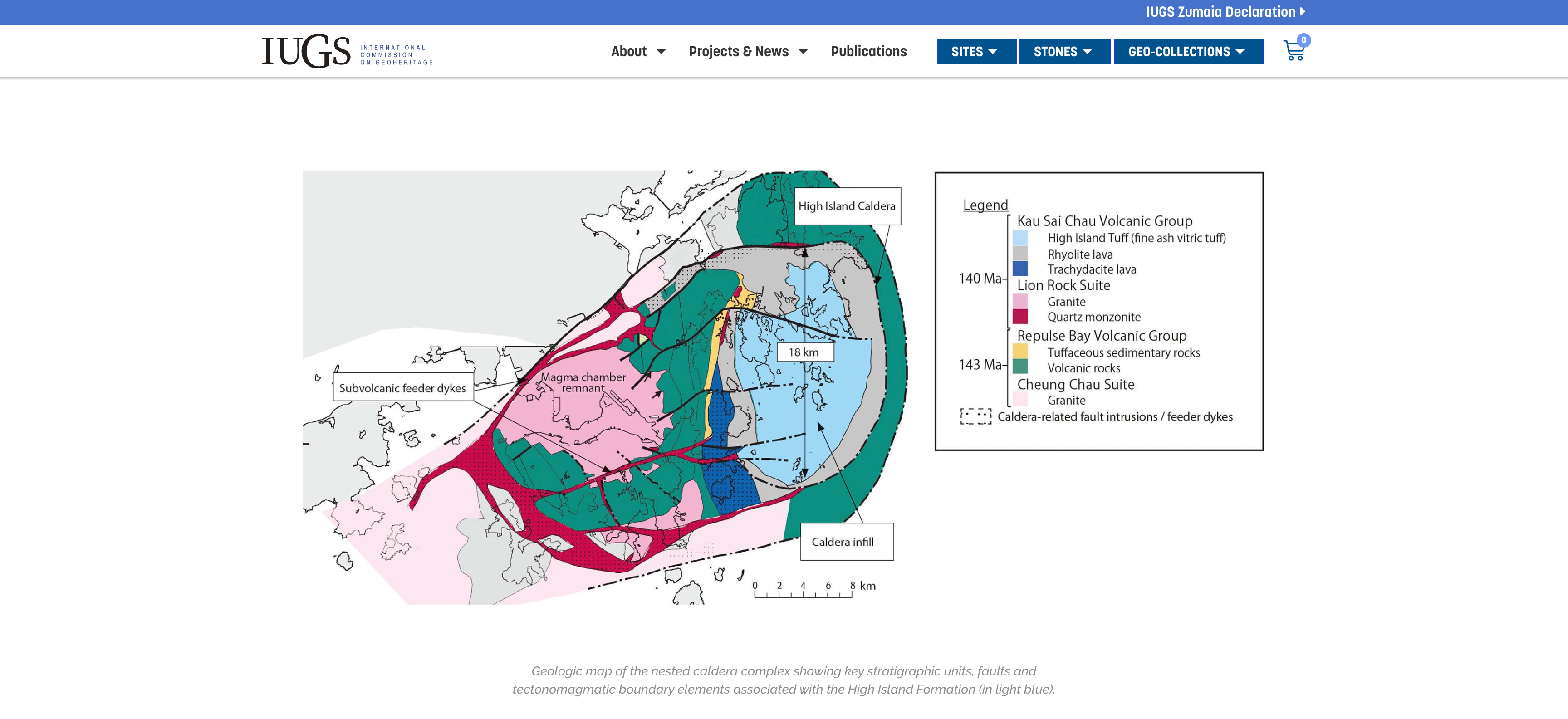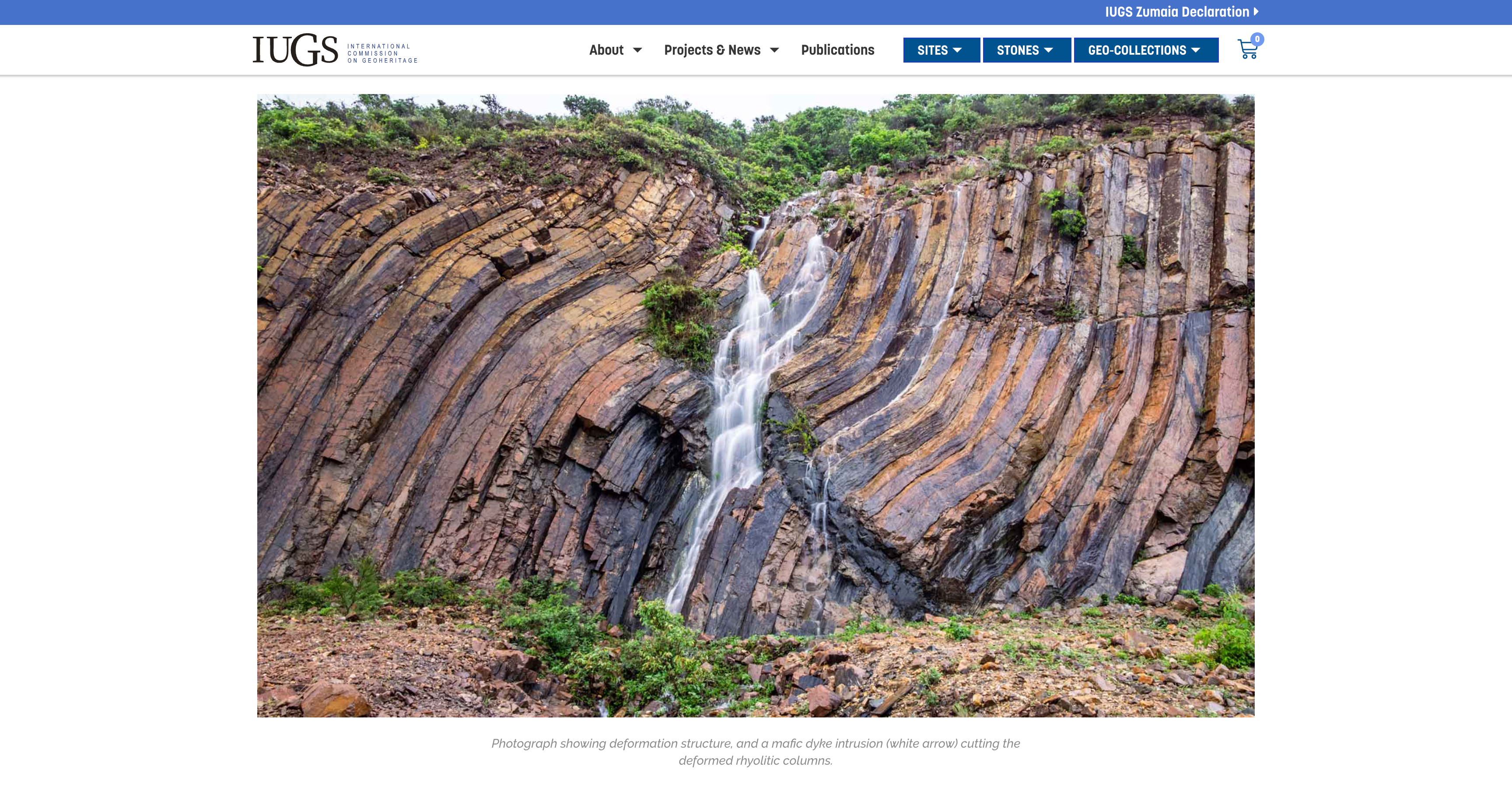


IUGS' Top 100 World Heritage Sites: High Island Supervolcano
Hong Kong's High Island SuperVolcano, located in the southeastern part of the Sai Kung Peninsula, is a geological wonder that has been recognised globally for its unique features. In 2022, the International Union of Geological Sciences (IUGS) included the Early Cretaceous Rhyolitic Columnar Rock Formation of Hong Kong, which is part of the High Island SuperVolcano, among its Top 100 Geological Heritage Sites. This recognition highlights the site's significance in the field of geology and its importance as a natural heritage site.
.
Geological Background
The High Island SuperVolcano is a relic of a massive volcanic eruption that occurred approximately 140 million years ago during the Early Cretaceous period. This eruption was so powerful that it formed an 18-kilometer-wide caldera, which is now part of the Hong Kong UNESCO Global Geopark. The volcanic activity resulted in the creation of hexagonal rock columns, which are a hallmark of the region. These columns are formed from felsic rhyolitic rocks with a high silica content, making them lighter in colour compared to similar formations elsewhere in the world.
.
Announcement and Recognition
The inclusion of the High Island Formation in the IUGS' Top 100 Geological Heritage Sites was announced in 2022. This recognition underscores the site's unique geological features and its contribution to the understanding of volcanic processes. The High Island Formation has been part of the Hong Kong UNESCO Global Geopark since 2009, further emphasising its global significance.
.
Geological Features
The High Island SuperVolcano is characterised by several distinctive geological features:
Hexagonal Rock Columns: These are formed through the cooling and contraction of volcanic ash within the caldera. The columns have an average diameter of about 1.2 meters, with some reaching up to 3 meters in diameter.
Caldera Complex: The supervolcano's caldera is a complex geological structure that provides insights into the volcano's anatomy. The caldera's formation is attributed to the collapse of the Earth's surface due to high pressure and heat from the Earth's core.
Geochemical Composition: The rocks in this formation are rich in silica, with up to 76% SiO2 content, which distinguishes them from other volcanic rock formations.
.
Geological Processes
The formation of the High Island SuperVolcano involved several geological processes:
Volcanic Eruption: The massive eruption produced a vast amount of volcanic ash, estimated at 1,300 cubic kilometers. This ash cooled and contracted, forming the characteristic hexagonal columns.
Tectonic Activity: The region has experienced tectonic movements, which have tilted the rock columns by about 30 degrees to the east. This tilt is evident in the orientation of the columns and provides valuable information about the geological history of the area.
.
The High Island Formation: A Geological Marvel in Hong Kong
The High Island Formation, dating back to 140-141 million years ago, is a remarkable geological feature prominently exposed along the coastlines, cliffs, and numerous islands in Sai Kung, Hong Kong. This formation spans approximately 100 square kilometers and reaches a thickness of up to 400 meters within a vast caldera complex. The average diameter of the hexagonal rock columns is about 1.2 meters, with some specimens reaching as large as 3 meters. Sai Kung's meandering coastlines and islands provide an ideal setting for these columns, which are often seen standing up to 100 meters above sea level, forming steep sea cliffs.
.
Scientific Research and Tradition
Comprehensive studies of the High Island Formation began as early as 1926 and continue to this day. Geologists have meticulously reconstructed the eruption history and the geometry of the nested caldera complex, making this formation the most significant geological heritage in Hong Kong and one of the most well-studied formations of its kind globally. Since 2009, it has been an integral part of the Hong Kong UNESCO Global Geopark, further emphasizing its international importance.
BOOK NOW: Hong Kong Geopark Boat Tour Visiting World's Largest Hexagonal Volcanic Rock Columns Group
.
Conservation and Tourism
The High Island SuperVolcano is not only a significant geological site but also a popular tourist destination. The Shoreline of High Island, known as the Shore of Hundred Thousand Columns offers visitors a chance to explore the area's breathtaking landscapes by speedboat, including towering cliff faces, sea caves, and picturesque beaches. The site's inclusion in the Hong Kong UNESCO Global Geopark ensures its protection and conservation for future generations.
BOOK NOW: Hong Kong Geopark Boat Tour Visiting World's Largest Hexagonal Volcanic Rock Columns Group
.
Conclusion
The High Island SuperVolcano is a testament to the geological wonders that lie beneath Hong Kong's surface. Its recognition as one of the IUGS' Top 100 Geological Heritage Sites highlights its importance in the field of geology and its value as a natural heritage site. Whether you are a geology enthusiast or simply interested in exploring Hong Kong's natural beauty, the High Island Supervolcano is a must-visit destination.
BOOK NOW: Hong Kong Geopark Boat Tour Visiting World's Largest Hexagonal Volcanic Rock Columns Group
.
References:
IUGS Geoheritage Site (2022): Early Cretaceous Rhyolitic Columnar Rock Formation of Hong Kong.
